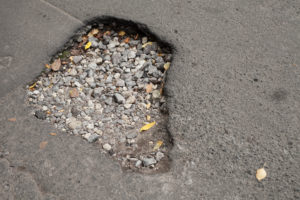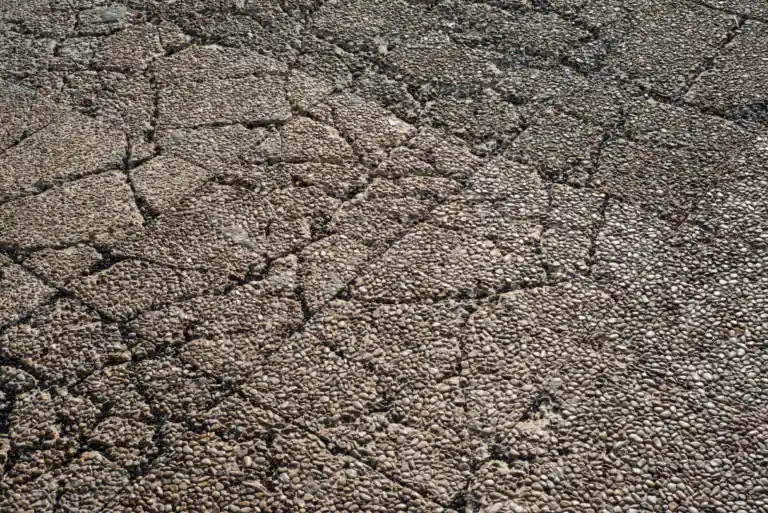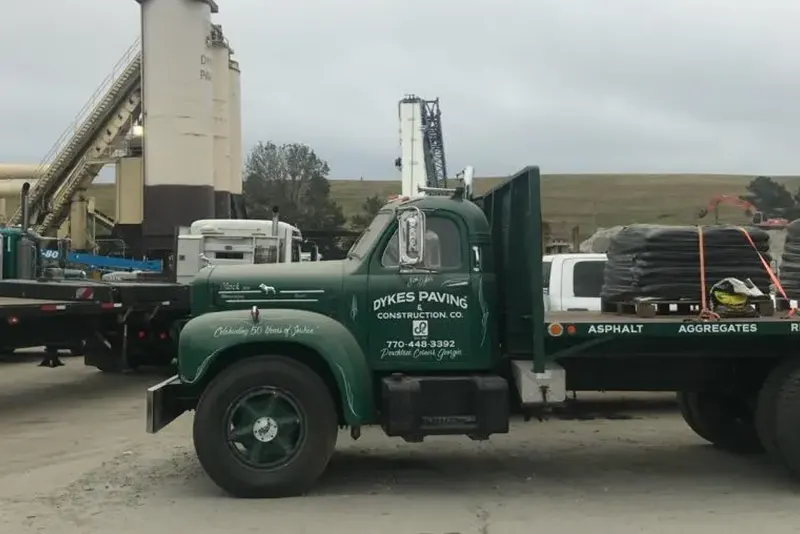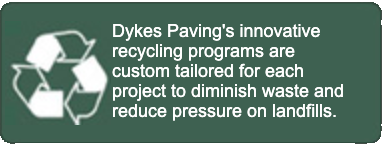Temperature fluctuations, snowfall, and plowing are all hard on asphalt paving. Over time these extreme temperature swings coupled with the everyday wear-and-tear from vehicles can cause asphalt to develop fissures or even dangerous potholes.
These potholes are bad enough in their own right, but when left untreated they can create even larger vulnerabilities. So, when are potholes most likely to develop and worsen?
You tend to notice a lot of potholes in the latter part of winter as well as the beginning of the spring season as this is the time of the year in which asphalt is combating the heaviest amounts of excess water and thawing.
Too much water and extreme temperature fluctuations don’t do any favors to asphalt, yet there is something you can do about damage that’s already occurred.
Cold Mix Asphalt for Potholes
Cold mix asphalt is made in pug mills by combining asphalt emulsions with aggregates designed to increase the integrity of your asphalt.
Because cold mix asphalt can be made to provide a coarser, stonier asphalt binder with a very high load factor or be used as a base or leveler, cold mix asphalt makes a great all-purpose material to work with. Cold mix is also extremely ego-friendly.
- Proven track record
For this reason, cold mix asphalt is also ideal for filling in potholes. Cold mix asphalt is actually quite flexible yet, because of how it’s constructed, also extremely durable and resistant to damage from the freeze-thaw cycle that can ravage your property in the late winter and early spring.
Cold mix asphalt already has a long track record of being used for temporary patching, even in the winter time. One of the reasons that many engineers and paving services actually prefer cold mix to hot mix asphalt is that cold mix can be used at lower temperatures and stored for later use if needed.
Whenever hot mix asphalt is hard to come by, or when conditions drop below a certain temperature, cold mix asphalt is the go-to material for maintaining roads and filling in potholes, especially from November to February.
- How it works
Because cold mix asphalt combines bitumen emulsion, cold aggregates designed for tough conditions, and even anti-stripping materials, it can be used in a wider range of weather conditions.
Not only that – cold mix asphalt is seen as easier to work with and more flexible than its hot mix counterpart due to the fact that cold mix asphalt has a longer cure time.
Although cold mix asphalt is already lab designed and tested to provide the best combination of flexibility and durability, different additives can be combined to the mix in order to render cold mix asphalt the perfect solution for your next project.
Cold mix asphalt can even be formulated to provide a long-term solution to improving the integrity of rural roads and parking lots to their original condition. In short, cold mix asphalt is very ease to work with, durable and can even be stored for months until you need another pothole filled.
- Cold mix exceeds expectations
Some people might be wondering about how cold mix asphalt holds up against hot mix asphalt in terms of meeting design guidelines.
Know that cold mix asphalt is resilient to cracking and fatigue and even has the capacity to self-heal. In addition, cold mix asphalt can be formulated to match the high AASHTO standards established for hot mix asphalt.
Make sure to regularly check your parking lot or home driveway for fissures and potholes. Too many potholes can even be a sign that your asphalt needs a sealcoating or routine spring maintenance. Contact us today to make sure your free of potholes and you have a grade A driveway or parking lot.









